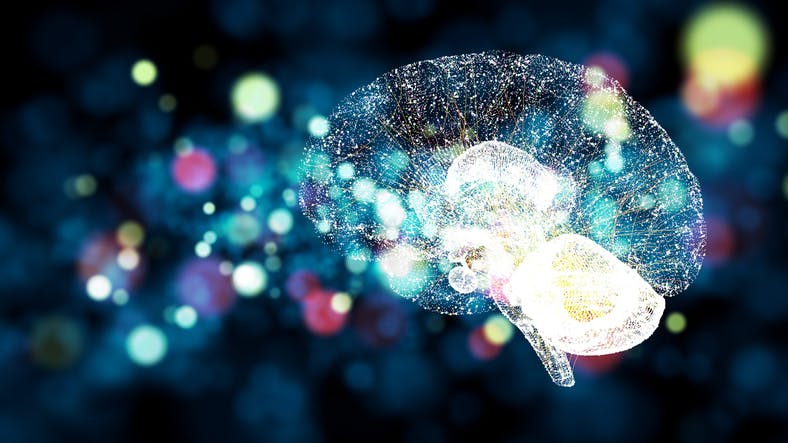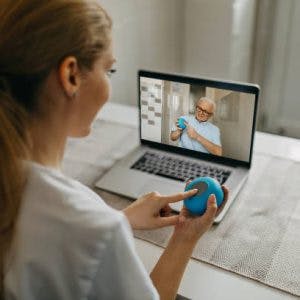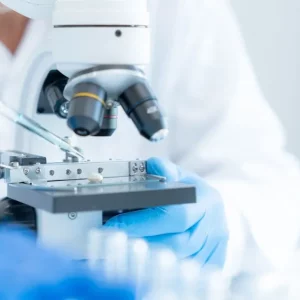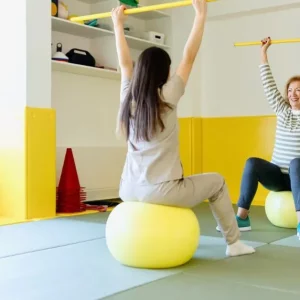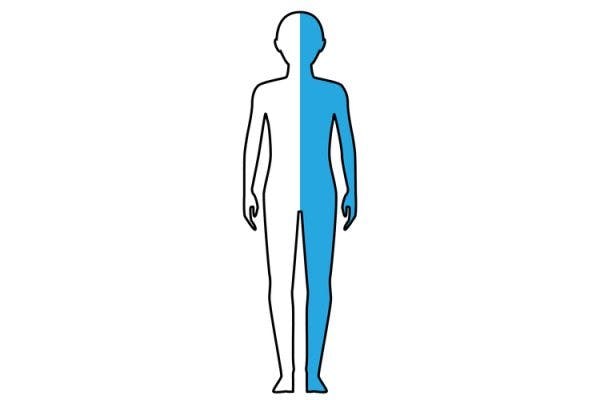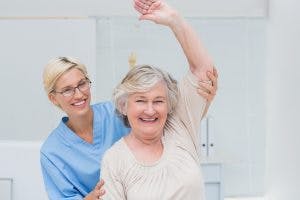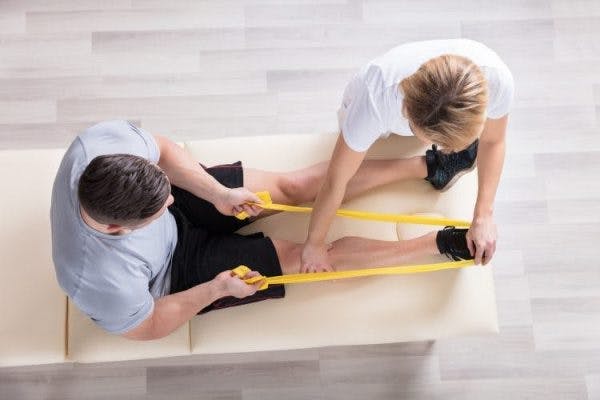Neuroplasticity after stroke is a widely discussed topic, but survivors may be left wondering how this relates to recovery. On average, the brain uses 100 trillion neural connections to send and retrieve information. When a portion of these connections are damaged by an injury like a stroke, the brain can create new pathways through a process called neuroplasticity.
Although tissue damage at the core of the stroke cannot be reversed, neuroplasticity may rewire functions to new, healthy areas of the brain. This helps compensate for tissue damage sustained after stroke and can lead to improvement in functions that were once impaired or lost.
To help you understand the role of neuroplasticity after stroke, this article will review how neuroplasticity works and the impact it has on brain and motor functions. Additionally, we will review different methods to help boost neuroplasticity after stroke and maximize your recovery potential.
Neuroplasticity After Stroke Works Differently for Everyone
First, it’s important to understand that every brain is organized somewhat differently and that every stroke is unique. The secondary effects a survivor experiences after stroke will depend on many factors, such as the area of the brain affected and the severity of the stroke. As a result, every recovery process from a stroke will look different.
Understanding the location of your stroke can help you understand the potential secondary effects that may occur. This is because each area of the brain is responsible for different cognitive, sensory, or motor functions.
For example, a left hemisphere stroke may cause language difficulties because the left hemisphere of the brain is where the language center of the brain generally resides. To overcome language difficulties after stroke, neuroplasticity allows the brain to strengthen existing neural connections or create new connections elsewhere in the brain.
Think of the brain as an elaborate storage system. When one file cabinet is destroyed, you can relocate that information to another cabinet. However, it is important to note that it takes time and effort to recreate all the “documents” and file them away again.
While this analogy may be simplified, it can help survivors better understand how neuroplasticity plays a role in stroke recovery. Neuroplasticity helps stroke survivors regain lost skills and increase their independence. Now, let’s explore how survivors can help activate neuroplasticity after stroke.
Quick Summary
After a stroke, the healthy areas surrounding the damaged brain tissue can compensate and develop new functions. This rewiring and reorganizing process is called neuroplasticity.
Activating Neuroplasticity with Massed Practice
Neuroplasticity is dependent on experiences and learning. This means that the skills or experiences you repeatedly practice help determine how the brain will reshape itself.
For instance, mathematicians spend many hours each day practicing arithmetic. As a result of their experience and learning, mathematicians may have increased grey matter in the areas of the brain responsible for arithmetic. Their brains have become efficient at solving math problems through the process of neuroplasticity.
You can apply this concept to any skill that you want to improve, such as fine motor skills, walking, or performing activities of daily living. The more you stimulate your brain by practicing these tasks, the easier these will become as new connections are formed.
For lasting changes to take place via neuroplasticity after stroke, it is necessary to perform high repetition of the skills or movements you want to improve. Therapists often refer to this as massed practice, and this consistent high repetition is the key to stroke recovery.
Quick Summary
Neuroplasticity after stroke is activated by massed practice: high repetition of a task.
Using Neuroplasticity After Stroke to Regain Lost Skills
It’s important to take advantage of neuroplasticity at every stage of the stroke recovery process, regardless of how long it has been since your initial injury. Neuroplasticity is most receptive immediately after stroke, which is why stroke rehabilitation starts on day 1. Rehabilitation specialists begin therapy to activate the healing process as soon as possible to maximize recovery.
The first six months of recovery are when survivors will likely experience the fastest, greatest improvements in function. This is because neuroplasticity after stroke is the most active in this period as the brain heals. This sudden or dramatic improvement is sometimes called spontaneous recovery.
Throughout the continuum of care, therapists focus on using massed practice to improve a survivor’s potential for recovery. For instance, physical therapists may help stroke patients practice physical therapy stroke exercises to improve strength and mobility. The exercises are practiced repeatedly to stimulate neuroplasticity after stroke and recruit new neural connections to control movement.
One example of this is walking, which is a major goal for many survivors. To help regain the ability to walk after stroke, survivors must practice the components of walking to help rewire the connections necessary to perform this skill. This may start with passive exercise, where the therapist moves your legs for you in a motion similar to walking.
As time progresses you may be able to walk with the help of an assistive treadmill while your therapist helps move your legs. Since your brain will be working to make new connections and rewire motor functions through neuroplasticity, you might notice that you need progressively less help to move your legs forward. With time, you may be able to practice walking with a walker or other adaptive equipment.
Occupational therapists may guide patients in practicing the movements and skills needed for their activities of daily living. These activities, sometimes referred to as ADLs, include cooking, dressing, self-care, and even activities like driving. By structuring these tasks into individual steps and repeating them often, one can regain independence after stroke thanks to neuroplasticity.
Similarly, speech therapists encourage patients to practice speech therapy exercises to improve language skills. Additionally, a speech therapist is an amazing resource for those who have difficulty swallowing after stroke. As with all therapies, speech therapy exercises are done repetitively to stimulate the brain and encourage neuroplasticity after stroke.
These are all examples of how neuroplasticity can be utilized to make progress toward your goals. Essentially, any skill that you can practice can improve your independence. This even applies to sensory issues such as numbness after stroke, which may be decreased by practicing sensory reeducation exercises. In summary, the brain’s innate ability to heal and recover can be attributed to neuroplasticity.
Quick Summary
Skills lost due to tissue damage caused by stroke may be regained by practicing high repetitions of those specific skills. There are a variety of therapies available after a stroke to increase recovery within the brain and the body.
BDNF Also Helps Neuroplasticity
Aside from massed practice, there is an additional, well-studied strategy to enhance neuroplasticity: increasing brain-derived neurotrophic factor (BDNF). BDNF is a protein that supports and encourages the growth of new neurons and synapses, which is critical for neuroplasticity after stroke.
One way to boost BDNF is performing aerobic exercise, which refers to any kind of exercise that increases your heart rate. Examples of aerobic exercise include brisk walking, arm or leg cycling, and swimming. In addition to increasing BDNF, aerobic exercise can increase overall cardiovascular health, improve cognitive function, and help decrease the risk of a second stroke.
If mobility impairments after a stroke prevent you from participating in aerobic exercise, talk to a physical or occupational therapist. They may recommend adaptive exercise equipment to assist you with aerobic exercise or might provide alternative exercises to get your heart rate up.
Another way to boost BDNF (and therefore neuroplasticity) after stroke is by eating certain foods. For example, a diet that is rich in polyphenols can increase BDNF levels to help boost neuroplasticity after stroke. Examples of these foods include berries, nuts, whole grains, and vegetables.
Additionally, omega-3s have been shown to normalize BDNF. These fatty acids can be found in different types of seafood, such as salmon, as well as in certain nuts and seeds. In combination with adequate hydration and quality sleep, eating a healthy, balanced diet can help boost neuroplasticity after stroke and allow you to maximize your recovery.
Quick Summary
Neuroplasticity is aided by a protein called BDNF, which you may boost through aerobic exercise and a healthy diet.
Neuroplasticity After Stroke and Recovery
Although the brain is in a heightened state of plasticity immediately after stroke, neuroplasticity may be activated throughout the recovery process. Whether it has been a few months or a few decades since a stroke, the brain is still capable of healing and rewiring.
Studies have shown that the brain is changing itself throughout an entire lifetime. This means that recovery is continuous and that, no matter where you are in your recovery journey, progress can always be made. Whenever you stimulate your brain with positive, consistent, and repetitive input, the brain will respond.
Engaging neuroplasticity after stroke by performing high repetition of therapy exercises is your greatest tool for recovery. Additionally, you can maximize neuroplasticity by performing regular aerobic exercise and eating a healthy diet of BDNF-boosting foods. Overall, consistency is key and we hope this new understanding of neuroplasticity keeps you inspired on the road to recovery.

